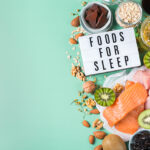MODERATION

Can you guess the missing word (it’s the same each time)?
- There are proven health benefits of ________
- Eating _______ has been linked to a lower risk of dying
- Consuming ______ is associated with a reduced risk of all kinds of ailments
- But eating too much of _______ is harmful.
Could the missing word be coffee… or protein…. or even carrots?
Yes… on all counts! In fact, you could insert all manner of foods, drinks, macronutrients and micronutrients in that space. It’s the norm to have this bell-shaped curve when it comes to nutrition:

I like to point out that Vitamin A is an essential micronutrient for health but there’s a spike in the tail. In many countries, millions of children do not get enough Vitamin A, primarily because they don’t have sufficient access to animal foods, the only source of pre-formed Vitamin A . Their brains don’t develop normally, they are more vulnerable to blindness and infections and of course, adults and children who ingest borderline amounts can’t see well in the dark. While plant foods like carrots can provide precursors to Vitamin A, these are not well absorbed, especially from raw vegetables.
On the other hand, if you ingest too much Vitamin A, even from foods (especially liver which is extremely rich), you risk toxicity – severe headaches, bone and joint pain, and increased likelihood of birth defects. Women are particularly at risk if they happen to fall pregnant. A study published in the New England Journal of Medicine in 1995 linked the highest intake of Vitamin A from either food or supplements (more than 10,000 IU per day) to a 5 times greater risk of neural tube defects than those who consumed less than 5000 IU per day (1). In practical terms, the difference between the ‘no harm’ level and toxicity is just 2-fold.
The same is true of protein – too little results in kwashiorkor, a form of malnutrition still seen in Africa (2) while too much protein results in ‘rabbit starvation’. What’s that you say? Rabbit starvation was the name given by early American explorers forced to live on lean rabbits alone for as long as a week or two (3). By 3 weeks, they were often comatose or dead. This is because the liver has only a finite capacity to remove the amine group from amino acids (the breakdown products of protein). Again, the dose associated with ‘no harm’ and the toxic dose is only 2-fold.
It also applies to sugars. Although there are those who will disagree, logic tells us it doesn’t matter where the sugars comes from. We find sugars in fruit, honey, vegetables and virtually all plant foods. Glucose is the molecule of life after all – formed when sunlight combines water and carbon dioxide. In many plants, some glucose is converted to fructose and thence to a combination of glucose and fructose known as sucrose. This is the form of sugar found in abundance in sugar cane and sugar beet but most fruit contains a mixture of glucose, fructose and sucrose. Many primates, including our ancestors, were frugivores, getting most of their energy from fruit.
In addition, research suggests that the evolution of the large, energy-demanding human brain was ‘bankrolled’ by the sugars in fruits and berries. Indeed finding the reddest, ripest fruit gave us our colour vision. The sugars found in fruit are the only form of energy in most fruits and the preferred fuel for the brain. Starches yield glucose too, but we needed to be smart enough to harness fire before we could cook the starch in roots, tubers and seeds. The brain had grown remarkably big before that stage.
Added sugars are considered separately from the sugars in fruit but there’s no scientific reason to do this. Added sugars don’t dilute the micronutrients in the rest of the diet unless intake is exceptionally high (about 25% of total energy intake). In Australia, Professor Jimmy Louie and colleagues found that adults and children consuming the least amount of added sugars (<5% energy) had lower overall intakes of the essential micronutrients than those whose intake was 2-3 times that amount (4).
So again, too little is a recipe for trouble and a moderate amount is ideal.
Of course, it’s also true for too much sugar – whatever the source. At levels above 25% of energy, diets tend to be less nutritious – soft drinks tend to dominate, providing ‘empty’ calories only. There is also evidence that excessive soft drink consumption (not sugars per se) promotes weight gain, although any source of excess energy (calories above needs) in the form of fat, protein, carbohydrate (i.e., starch) or alcohol will also be problematic.
Many people think added sugars cause type 2 diabetes, but the evidence points to the opposite. In the PREVIEW study of 2,300 people who were overweight and had pre-diabetes, higher intake of sugars whatever their source was associated with less risk of type 2 diabetes and better glucose metabolism (5). This might seem surprising, but other studies have reported the same inverse trend (6).
The moral of this month’s food for thought is that good nutrition is a game of moderation with respect to every food and drink. And a moderate intake of macronutrients and micronutrients is ideal. I think you can guess the missing word or words below.
Don’t restrict _______
Don’t limit________
Don’t over-indulge_______
Read more:
- Rothman and colleagues. Teratogenicity of high vitamin A intake. N Engl J Med. 1995.
- Benjamin and Lappin. Kwashiorkor. StatPearls Publishing, 2024.
- Speth. The Other Side of Protein. In: The Paleoanthropology and Archaeology of Big-Game Hunting. Interdisciplinary Contributions to Archaeology, 2010.
- Mok and colleagues. Intake of free sugars and micronutrient dilution in Australian adults. The American Journal of Clinical Nutrition, 2018.
- Della Corte, and colleagues. Longitudinal Associations of Dietary Sugars and Glycaemic Index with Indices of Glucose Metabolism and Body Fatness during 3-Year Weight Loss Maintenance: A PREVIEW Sub-Study. Nutrients 2023.
- Tsilas and colleagues. Relation of total sugars, fructose and sucrose with incident type 2 diabetes: a systematic review and meta-analysis of prospective cohort studies. CMAJ. 2017
Emeritus professor Jennie Brand-Miller held a Personal Chair in Human Nutrition in the Charles Perkins Centre and the School of Life and Environmental Sciences, at the University of Sydney until she retired in December 2022. She is recognised around the world for her work on carbohydrates and the glycemic index (or GI) of foods, with over 300 scientific publications. Her books about the glycemic index have been bestsellers and made the GI a household word.








